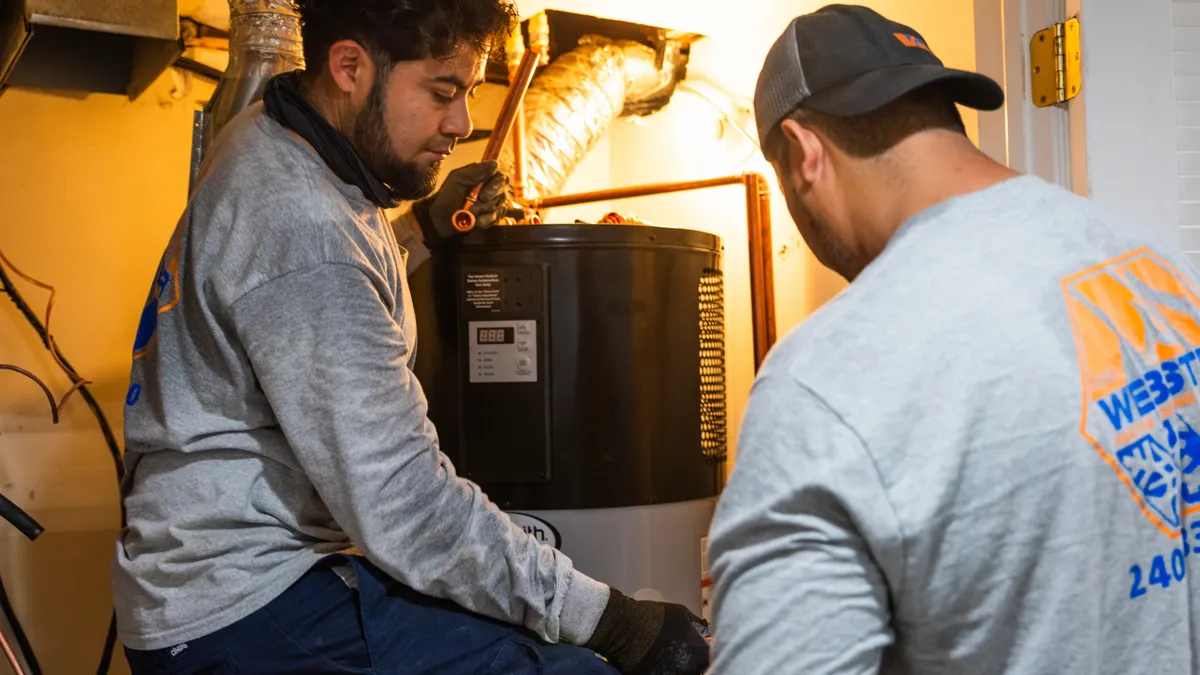In the U.S., homes and commercial buildings are responsible for around 31% of greenhouse gas emissions. So it's no surprise that state and federal policies aim to aggressively electrify the sector. However, in our decades of building decarbonization work, we have found that many current solutions don’t reach a key group of residents: low to moderate-income (LMI) households. Here's why – and how – we must change that.
According to a report by the American Council for an Energy-Efficient Economy (ACEEE), we would save up to $2 trillion between now and 2025 if we decarbonize buildings equitably. The energy savings, social benefits, and avoided health costs of moving away from fossil fuels significantly outweigh the costs.
The human benefits of electrifying homes equitably are even greater, especially in low-income communities that experience the first and worst climate impacts. Lyla Fadili, a senior researcher at ACEEE, highlighted the urgency of expanding access: "If we don't invest in energy upgrades in lower-income homes, we risk both higher energy costs and real impacts on human lives from air pollution and climate change, like having a family member hospitalized or a home being flooded."
The 2022 Inflation Reduction Act (IRA), which provides historic funding for both home and commercial electrification, is cause for optimism. The Justice40 Initiative is another bright spot in federal policy since it targets that at least 40% of benefits from federal climate investments reach disadvantaged communities. There's also more advanced, efficient technology on the market. Despite funds and technology being more accessible than ever, many LMI communities report difficulty finding incentives, navigating permits, and choosing contractors.
To address these barriers, the California Public Utilities Commission assembled an implementation team to run various TECH Clean California programs. VEIC was selected to administer Quick-Start Grants (QSG). These grants fund pilots that test innovative approaches to overcoming barriers to adopting heat pump technologies. The hope is that these pilots will inform statewide solutions for energy providers and program administrators.
One QSG was awarded to The Energy Coalition, a group that supports income-constrained households with whole-home electrification. The QSG was one of many funding sources used to offer homeowners free solar, battery storage, and efficient appliances. The group anticipated challenges in navigating the layered programs, so they designed a robust community engagement process. But the bigger hurdle turned out to be getting people interested in services to begin with. This raised an often-overlooked barrier: trust.
Even when programs are free, many LMI communities hesitate to engage with them. Reflecting on the project, The Energy Coalition team noted that — in the words of activist Adrienne Maree Brown — programs must “move at the speed of trust.” To do so, the team recommends that “program implementers must be flexible, patient, introspective, creative, willing to problem solve, and committed to adaptive management.”
Many low-income or underserved communities are understandably wary of free services. This means program administrators need more outreach, established trust, and a seamless customer experience to reach them. Funds alone cannot move the market; we must also reorient energy program structures to address why underserved communities struggle to electrify their homes or participate in programs like TECH Clean California.
Another QSG was awarded to Franklin Energy to address similar barriers. Franklin Energy implements a Home Energy Savings (HES) program, which provides home energy retrofits at no cost to low-income single-family households. Many eligible Californians do not take advantage of heat pump incentives because their homes need costly electrical repairs or sub floor resizing first. The QSG allowed Franklin Energy to make necessary repairs and retrofits in homes otherwise unable to utilize incentives. To ensure residents knew about these funds, Franklin Energy provided free home energy assessments to highlight potential electrification opportunities and incentives that could offset their costs.
The program was a major success. 67% of the installations in moderate-income households needed QSG funding to electrify their homes. This program underscores the importance of having a supportive conduit between customers and programs to clarify opportunities and ease administrative burdens.
We have seen similar challenges and successes outside of California. VEIC runs the DC Sustainable Energy Utility (DCSEU) — an energy efficiency program for District residents — on behalf of the Department of Energy and Environment (DOEE). D.C. has adopted some of the country’s most comprehensive clean energy transition policies, including targets for building energy performance. These goals cannot (and should not) be met without electrifying low-income households.
To address this gap and tackle the District's ambitious goals, the DCSEU designed the Low-Income Decarbonization Pilot, which aimed to reduce the carbon emissions of 10 income-qualified single-family homes. The program layered two decarbonization tactics: replacing gas home systems with electric equipment and incorporating solar PV systems to power these new systems.
As a first-of-its kind project, the Pilot's results were promising. Participants reported greater home comfort, improved indoor air quality, and more affordable utility bills. The electrified homes have reduced annual greenhouse gas emissions by 31.9 metric tons of CO2e. Equally important, the pilot provides a roadmap for other states and cities to scale equitable building decarbonization programs.
VEIC has spent nearly 40 years helping businesses, organizations, and cities electrify buildings nationwide. We research, plan, and run programs of all sizes. And while the available funding and technologies change over the years, the recipe for equitable and effective decarbonization programs remains the same. Program administrators need both healthy funds and a clear path for energy-burdened residents to access them.
As IRA funding rolls in, let’s remember that strong outreach, community partnerships, and bridges between programs and people are just as important as incentives. And it’s up to us to include them so that energy programs meet their goals and provide energy relief to communities that need it most.










